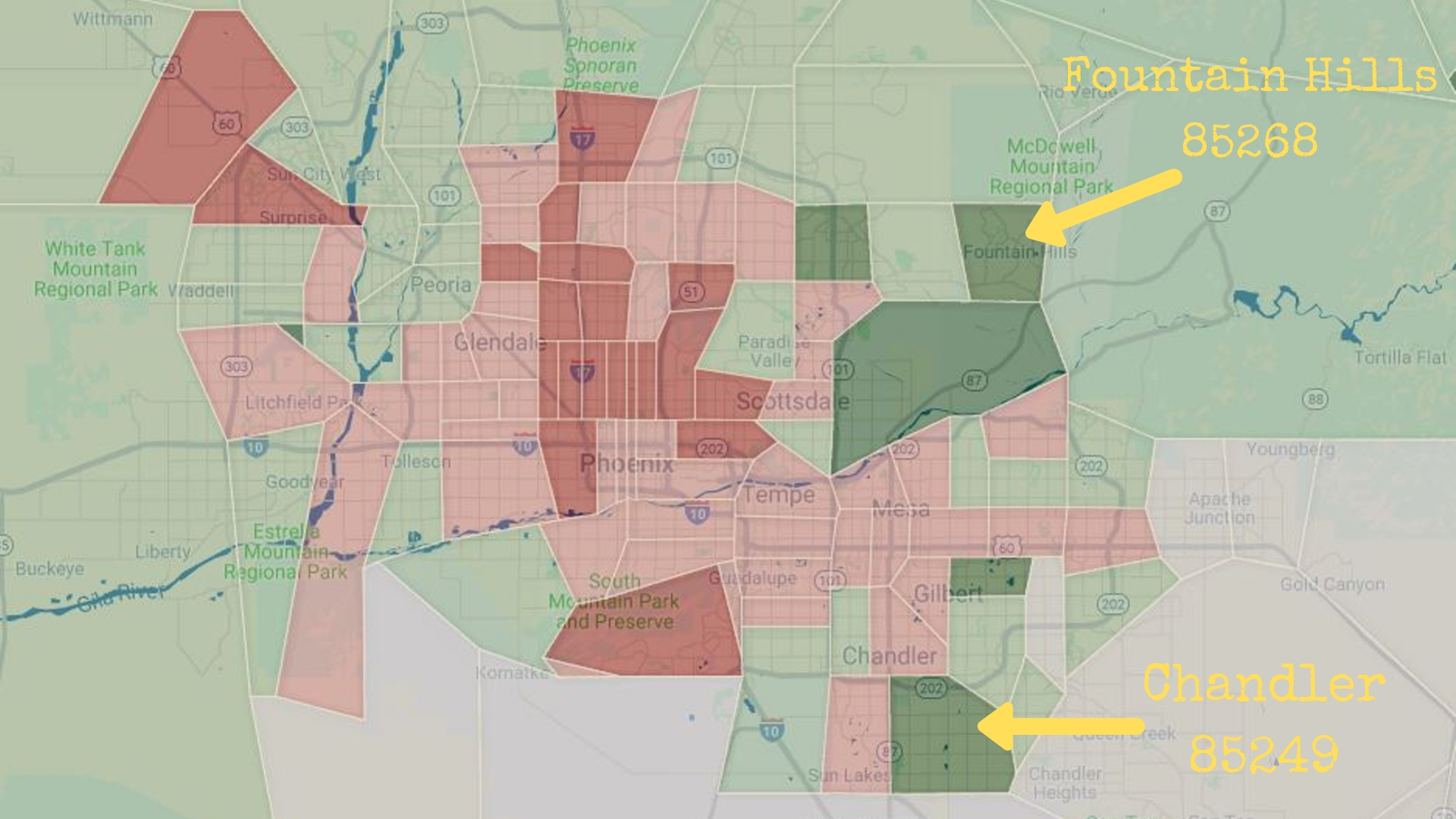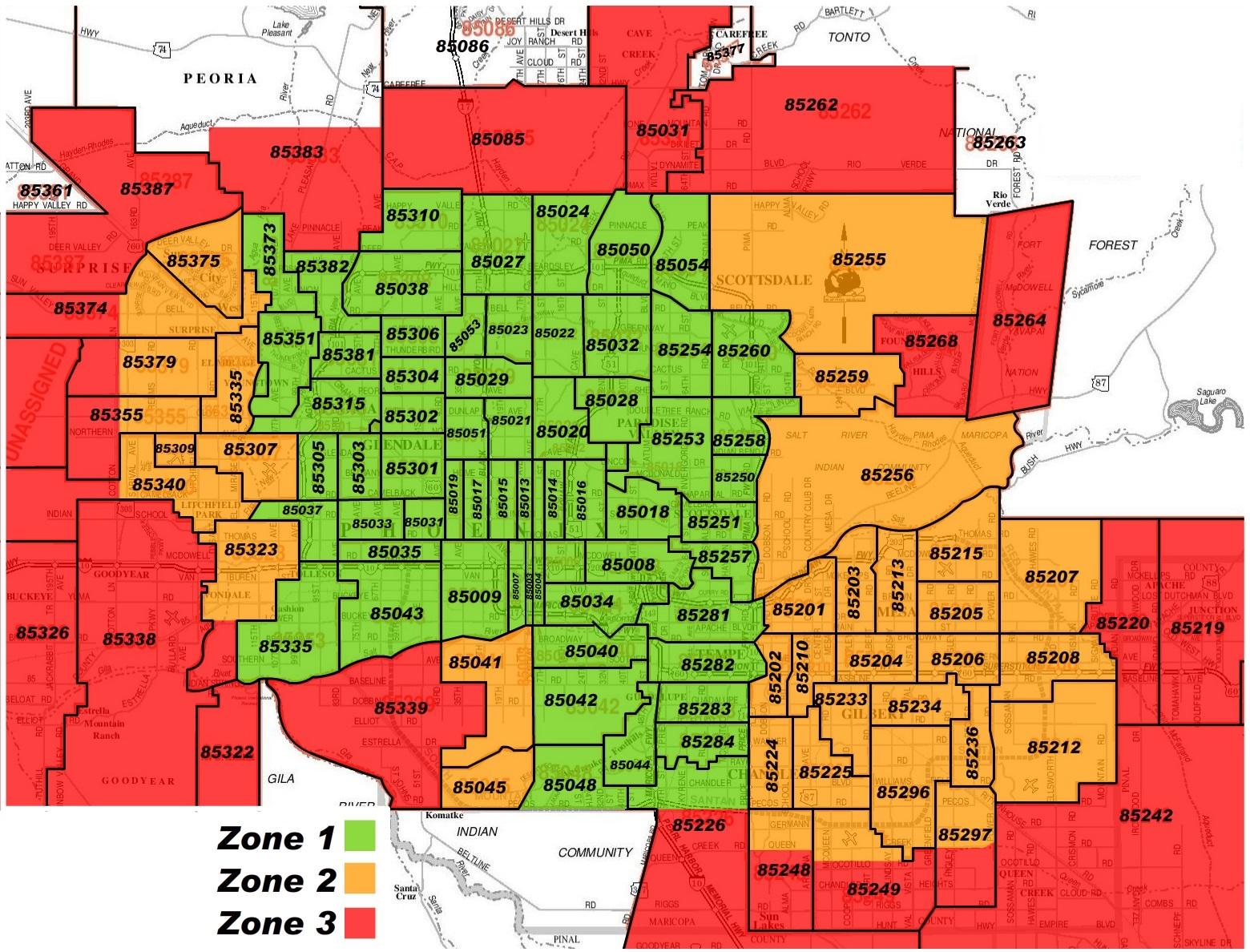Comprehensive Guide To Area Codes In Phoenix, Arizona
Phoenix, Arizona, is a bustling metropolitan area with several area codes serving its residents and businesses. Understanding these area codes is essential for communication and business purposes, especially in today's digital age. Whether you're a new resident, a business owner, or simply curious about the telecommunications landscape in Phoenix, this guide will provide all the information you need.
Area codes in Phoenix play a crucial role in directing calls to the correct geographic locations. These codes have evolved over the years to accommodate the growing population and technological advancements. This article will delve into the history, current status, and future developments of area codes in Phoenix, ensuring you have a comprehensive understanding of this vital communication tool.
By the end of this article, you'll have a clearer picture of how area codes function in Phoenix, Arizona, and how they impact daily life in the city. Let's dive into the details and explore the fascinating world of area codes in one of America's fastest-growing cities.
Read also:Shark Tank Butter Cloth The Ultimate Guide To The Revolutionary Kitchen Essential
Table of Contents
- History of Area Codes in Phoenix, Arizona
- Current Area Codes in Phoenix
- Geographic Coverage of Area Codes
- Understanding Overlay Area Codes
- Impact on Businesses
- Residential Use of Area Codes
- Future Trends in Area Codes
- Regulatory Overview
- Common Questions About Area Codes
- Conclusion
History of Area Codes in Phoenix, Arizona
The history of area codes in Phoenix, Arizona, dates back to the mid-20th century when the North American Numbering Plan (NANP) was introduced. This system was designed to simplify and streamline telephone communication across North America. Phoenix, as a rapidly growing city, soon required its own dedicated area codes to handle the increasing number of telephone users.
Initially, the area code 602 was assigned to Phoenix and the surrounding regions. As the population expanded and demand for phone lines grew, additional area codes were introduced to accommodate the needs of the community. This historical progression reflects the city's growth and its importance in the telecommunications landscape.
Evolution of Area Codes
The evolution of area codes in Phoenix has been driven by the city's demographic and economic growth. Here are some key milestones:
- 1950s: Introduction of area code 602
- 1990s: Addition of area code 480 due to increased demand
- 2000s: Implementation of overlay area codes like 623
These developments highlight the city's dynamic nature and its adaptation to changing telecommunications needs.
Current Area Codes in Phoenix
As of the latest updates, Phoenix, Arizona, is served by three primary area codes: 602, 480, and 623. Each of these codes serves a distinct geographic region within the metropolitan area, ensuring efficient communication across the city.
Understanding the current area codes is essential for both residents and businesses operating in Phoenix. These codes not only facilitate communication but also play a role in marketing and customer relations.
Read also:Shahrazad Ali Net Worth The Fascinating Journey Of A Business Icon
Overview of Each Area Code
Here is a detailed overview of each area code:
- Area Code 602: Primarily serves the central and western parts of Phoenix.
- Area Code 480: Covers the eastern suburbs of Phoenix, including cities like Tempe and Chandler.
- Area Code 623: Serves the western suburbs, including areas like Goodyear and Surprise.
This segmentation ensures that each region has adequate coverage and resources to meet its communication needs.
Geographic Coverage of Area Codes
The geographic coverage of area codes in Phoenix is carefully planned to ensure optimal service delivery. Each area code is assigned to specific regions based on population density and infrastructure requirements.
For instance, area code 602 covers the heart of Phoenix, where most government offices and corporate headquarters are located. In contrast, area codes 480 and 623 serve the suburban areas, which have seen significant growth in recent years.
Mapping Area Codes
Mapping area codes in Phoenix involves dividing the city into zones that align with the assigned codes. This mapping process is essential for telecommunications companies to manage their networks effectively. Tools like online maps and databases are available to help users identify which area code serves their specific location.
Understanding Overlay Area Codes
Overlay area codes are a relatively new concept introduced to address the growing demand for phone numbers in metropolitan areas like Phoenix. These codes are added to existing area codes without altering the geographic boundaries, allowing for more numbers to be issued.
In Phoenix, area code 623 serves as an overlay for parts of the 602 and 480 regions. This setup ensures that new phone lines can be provisioned without exhausting the available numbers in the original area codes.
Benefits of Overlay Codes
Overlay area codes offer several benefits, including:
- Preventing the need for renumbering existing phone lines
- Ensuring a steady supply of new phone numbers
- Minimizing disruption to established communication systems
These advantages make overlay codes an effective solution for managing the telecommunications needs of growing cities like Phoenix.
Impact on Businesses
For businesses operating in Phoenix, understanding area codes is crucial for effective communication and marketing strategies. The choice of area code can influence customer perception and trust, especially for local businesses.
Companies often prefer to use area codes that align with their target market's geographic location. This approach helps build rapport with customers and enhances brand visibility.
Marketing Strategies
Businesses can leverage area codes in their marketing efforts by:
- Using local area codes in advertisements to establish a connection with the community
- Providing toll-free numbers with local area codes for customer convenience
- Implementing geo-targeted campaigns to reach specific demographics
These strategies can significantly improve a business's reach and effectiveness in the Phoenix market.
Residential Use of Area Codes
For residential users, area codes play a vital role in maintaining communication with family, friends, and local services. Choosing the right area code can impact the cost and ease of making calls, especially for those with long-distance communication needs.
Residents in Phoenix have the flexibility to choose from multiple area codes, depending on their location and preferences. This flexibility ensures that everyone can find a solution that meets their communication requirements.
Tips for Residential Users
Here are some tips for residential users in Phoenix:
- Select an area code that aligns with your primary geographic location
- Consider the cost implications of long-distance calls when choosing an area code
- Stay informed about changes in area code assignments to avoid disruptions
By following these tips, residents can make the most of the available area codes in Phoenix.
Future Trends in Area Codes
The future of area codes in Phoenix, Arizona, is shaped by ongoing technological advancements and population growth. As the city continues to expand, the demand for new phone numbers and efficient communication systems will increase.
Telecommunications companies are exploring innovative solutions to meet these challenges, including the introduction of new overlay codes and the integration of digital communication platforms.
Predictions for Area Codes
Experts predict the following trends in area codes:
- Increased reliance on overlay codes to manage growing demand
- Integration of voice-over-IP (VoIP) technology to enhance communication capabilities
- Adoption of smart city technologies to optimize telecommunications infrastructure
These trends highlight the exciting possibilities for the future of telecommunications in Phoenix.
Regulatory Overview
The regulation of area codes in Phoenix falls under the jurisdiction of the Federal Communications Commission (FCC) and the Arizona Corporation Commission (ACC). These bodies ensure that area codes are assigned and managed fairly, protecting the interests of consumers and businesses alike.
Regulatory measures include oversight of new area code introductions, management of overlay codes, and enforcement of telecommunications laws and standards.
Key Regulatory Bodies
The following organizations play a critical role in regulating area codes in Phoenix:
- Federal Communications Commission (FCC): Oversees national telecommunications policies and standards.
- Arizona Corporation Commission (ACC): Manages state-specific telecommunications regulations and ensures compliance with FCC guidelines.
These bodies work together to maintain a stable and efficient telecommunications environment in Phoenix.
Common Questions About Area Codes
Many residents and businesses in Phoenix have questions about area codes and their usage. Here are some frequently asked questions and their answers:
- Q: Can I keep my existing phone number if I move within Phoenix? A: Yes, in most cases, you can retain your phone number if you move within the same area code region.
- Q: What happens when a new area code is introduced? A: New area codes are typically introduced as overlays, allowing existing numbers to remain unchanged while providing additional numbers for new users.
- Q: How do I find out which area code serves my location? A: You can use online resources or contact your telecommunications provider for accurate information about area code coverage.
These answers provide clarity on common concerns related to area codes in Phoenix.
Conclusion
Understanding area codes in Phoenix, Arizona, is essential for effective communication and business operations. From their historical development to current usage and future trends, area codes play a vital role in the city's telecommunications infrastructure.
We encourage readers to explore the resources available for managing area codes and to stay informed about regulatory updates. By doing so, you can ensure that your communication needs are met effectively and efficiently.
Feel free to leave your comments or questions below, and don't forget to share this article with others who might find it useful. For more information on telecommunications in Phoenix, check out our other articles on related topics.

